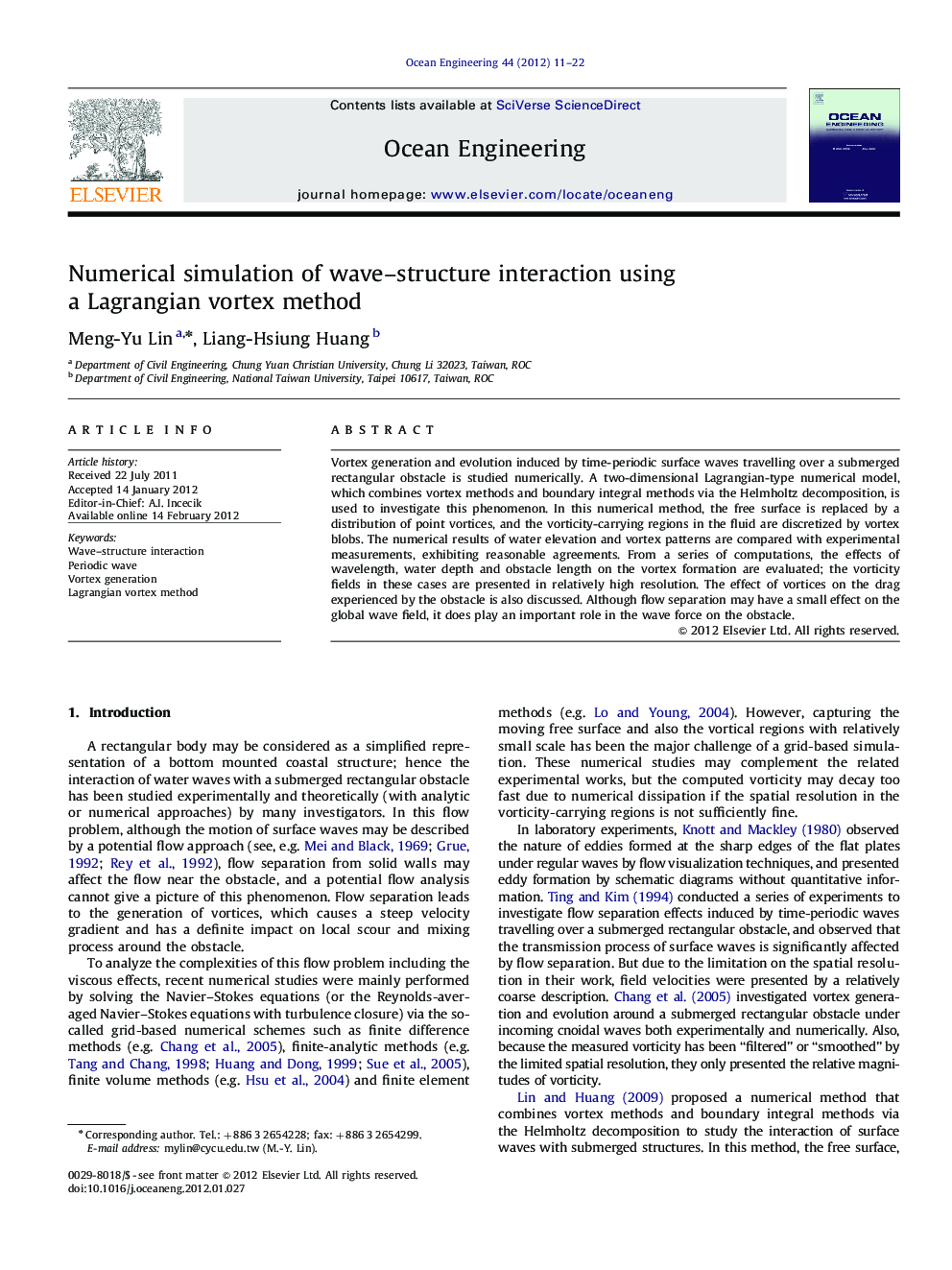| کد مقاله | کد نشریه | سال انتشار | مقاله انگلیسی | نسخه تمام متن |
|---|---|---|---|---|
| 1726304 | 1520746 | 2012 | 12 صفحه PDF | دانلود رایگان |

Vortex generation and evolution induced by time-periodic surface waves travelling over a submerged rectangular obstacle is studied numerically. A two-dimensional Lagrangian-type numerical model, which combines vortex methods and boundary integral methods via the Helmholtz decomposition, is used to investigate this phenomenon. In this numerical method, the free surface is replaced by a distribution of point vortices, and the vorticity-carrying regions in the fluid are discretized by vortex blobs. The numerical results of water elevation and vortex patterns are compared with experimental measurements, exhibiting reasonable agreements. From a series of computations, the effects of wavelength, water depth and obstacle length on the vortex formation are evaluated; the vorticity fields in these cases are presented in relatively high resolution. The effect of vortices on the drag experienced by the obstacle is also discussed. Although flow separation may have a small effect on the global wave field, it does play an important role in the wave force on the obstacle.
► Flow separation plays an important role in the wave force on the obstacle.
► The vortices in the down-wave direction travel farther with stronger strength.
► The Keulegan–Carpenter number is the key parameter for the vortices.
► The force induced by vorticity is enhanced when water depth becomes smaller.
► Vortices induced by a flat plate are stronger than those induced by a thick obstacle.
Journal: Ocean Engineering - Volume 44, April 2012, Pages 11–22